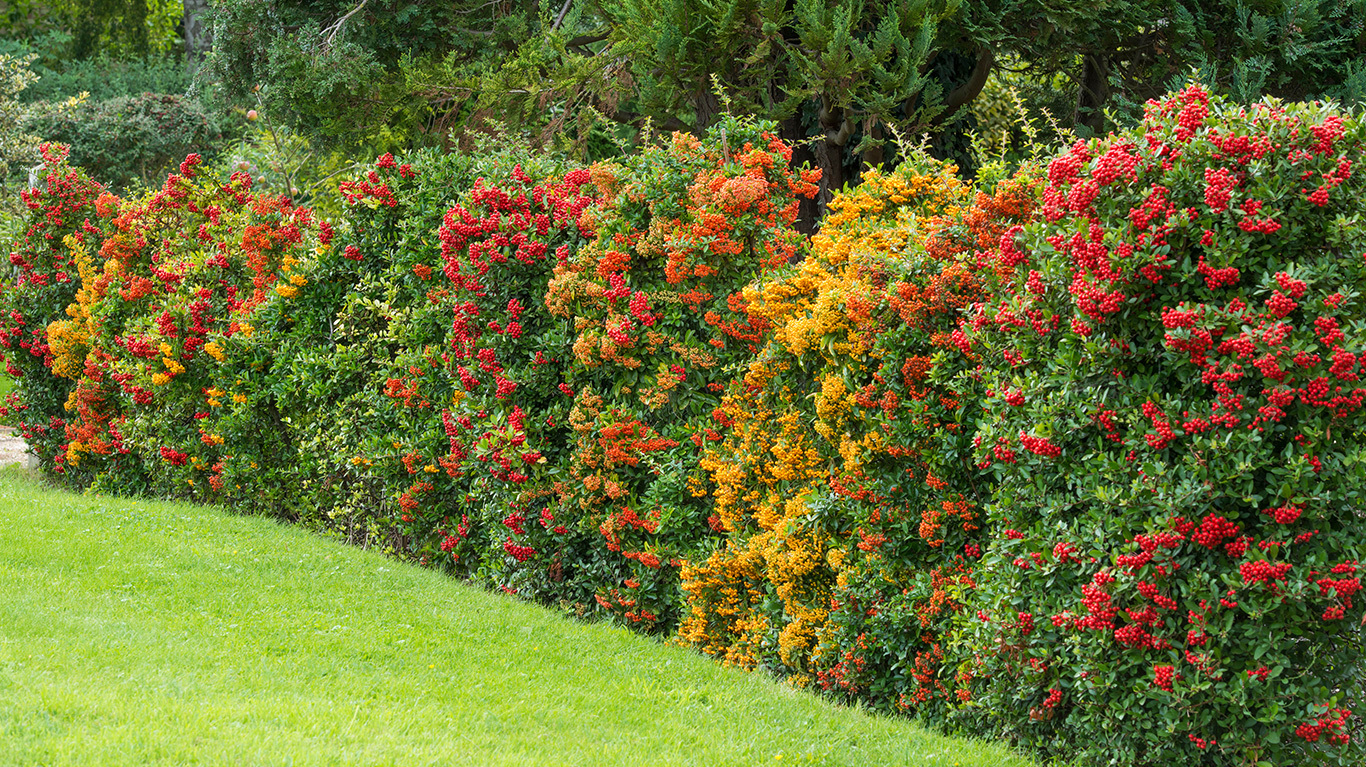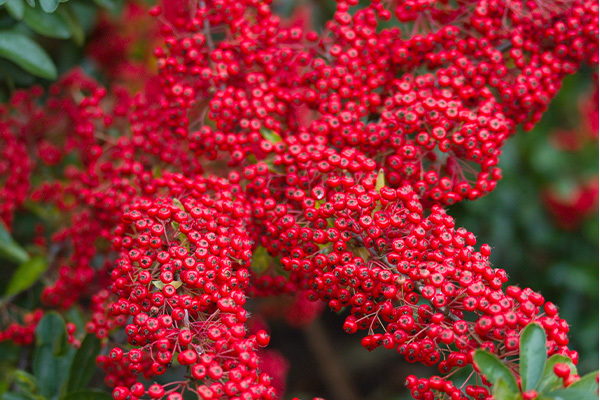
What We've Included
When to Plant | Where to Plant | How to Plant | When to Water | Mulching | Pruning | Propagating | Common Issues | When will they Flower?
When to Plant
Pyracantha shrubs can be planted at any time of the year, but autumn or winter are best. Container shrubs purchased in summer should be planted out as soon as possible and watered regularly to help them settle in.

Where to Plant
Pyracanthas can be planted in any fertile garden soil, with a sunny or partially shaded space in the garden to grow. These plants are grown as free-standing shrubs or trained against walls and fences.
How to Plant
Planting Pyracantha from pots into borders
- Prepare the soil before planting with plenty of organic matter, like compost, and general-purpose fertiliser – mixing it into the soil.
- Water the plant well before planting it in place so that the stress on the plant is minimalised.
- Dig a hole in the border that’s twice the width of the root system, and as deep as it was in its pot.
- Wedge in the plant by adding soil to the gaps in the hole, firming down the surface to ensure it’s in place. - Water in well, and you’re done!
If you’re planning on training your pyracantha against a wall or fence, make sure you space them about 50cm away from the wall to avoid dry soil at the base.
When to Water
For the first few years, water Pyracantha shrubs regularly. Once they have established, they won’t need watering as often, except for particularly dry spells in summer to help produce healthy growth. Large varieties, like hedging, can be watered every 10 days (about 1 and a half weeks) in dry weather.

Mulching
Mulch your shrub with organic matter made up of garden compost, or rotten manure, to help the plant retain its moisture and suppress weeds. Ensure to leave a circle free of mulch around the immediate base of the plant to prevent rotting.
Pruning
Pyracanthas can be pruned, but as they produce flowers on shoots grown the previous year, it’s advised that you try to keep as much two-year-old wood as you can.
You can heavily prune them back if you have an overgrown plant on your hands, and they respond well to this. Make sure you wear thick gloves when doing so, as they can have quite sharp thorns.
Propagating
Pyracanthas can be propagated by taking semi-ripe cuttings in late summer and early autumn or hardwood cuttings. You can also propagate them from seeds, which should be chilled for three months to aid germination.

Common Issues, Diseases, and Pests
Pyracanthas can be bothered by a few pests and diseases.
Pyracantha scab
This infection is a fungus that affects both leaves and fruit on your plant. It can cause leaf loss and disfigurement of berries. To avoid this issue without needing chemicals, you should make sure to rake and burn fallen leaves or sign up for a garden waste collection. Cut back infected areas, too. You can also avoid this issue by choosing varieties that are resistant to these fungi, like the Saphyr range, or plants like ‘Golden Charmer and ‘Teton’.
Fireblight
Fireblight is a disease caused by bacteria from spring to autumn. You may notice flowers wilt and die in peak flowering time, or shoots shrivel back and die as the infection spreads. To help, prune out and burn infected areas until you see healthier wood. Make sure to wipe pruning tools with disinfectant between each cut to avoid spreading the bacteria.
Pruning too often/too much
Plants trained along a wall or fence will need pruning annually. However, you could cut off flowers and berries by accident. If you need the berries, simply shorten the side-shoots in midsummer.
When will they Flower?
Pyracanthas can produce tiny flowers from spring to mid-summer. However, this can vary from plant to plant, so double-check your variety beforehand to know what to expect!
